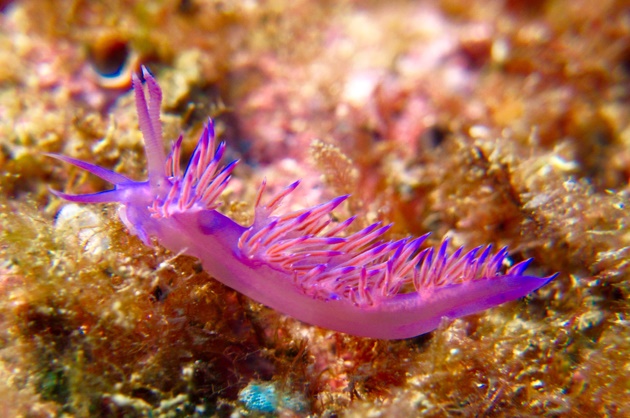How does such a fragile and conspicuous organism survive in a sub aqua environment, replete with voracious predators?
 Photo: Antonio Cruz
Photo: Antonio Cruz
This little sea mollusc (Flabellina affinis), just three centimetres long, which I photographed on the Catalan coast, is actually themarine nudibranch.
This means that its gills are totally naked, or exposed, rather than being protected by a shell or any other structure, as is the case with other species. So how does such a fragile and conspicuous organism survive in a sub aqua environment, replete with voracious predators? Well it is precisely the striking colours it displays that warn other sea creatures of its lethal toxicity. The powerful poison it contains makes any would-be predators keep their distance, with the result that it doesn’t have any. Its survival is nevertheless subject to the temperature of the water and other climatic conditions.
What is more, these organisms are hermaphrodites. That is to say, they are not divided into separate male and female sexes but each individual has the ability to receive sperm to fertilise its own eggs, and also to deliver sperm to fertilise the eggs of other individuals. Needless to say, the eggs are always cross-fertilised, to avoid auto-fertilisation. Aside from the obvious beauty, intelligence, adaptability, foresight and design that the nudibranchs’ way of life exhibits, this breeding method is also very striking. Hermaphroditism is ideal for organisms that find it difficult to find a mate, whether due to the characteristics of their habitats, their small numbers, their isolation or their slow movements.
It is fascinating to observe the great wisdom with which the Creator thought of all these details!

Las opiniones vertidas por nuestros colaboradores se realizan a nivel personal, pudiendo coincidir o no con la postura de la dirección de Protestante Digital.
Si quieres comentar o